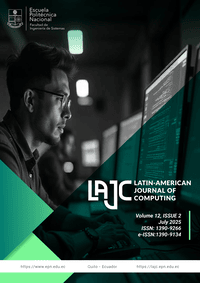Development of a desktop application prototype for blood banks
Keywords:
blood banks, inventory management, voluntary donations, desktop application, transfusion safety, automationAbstract
In this research, a prototype desktop application was developed to optimize the management of blood banks, with emphasis on inventory control and scheduling appointments for donations. The objective of the study was to develop an accessible software solution that automates administrative processes and contributes to a more efficient and secure management of blood resources. The methodology used was the agile Scrum framework, with the development organized in biweekly iterations. SQL Server was used as the database manager due to its robustness and security. Validation was carried out in a simulated environment representative of a blood bank, using scenarios designed to emulate real tasks in the management of donations. In addition, a usability evaluation was conducted with real users through structured interviews, who identified strengths and opportunities for improvement in the interface. The results showed a significant reduction in record-keeping errors, greater operational efficiency and improved interaction with donors. The usability evaluation revealed needs for refinements to the visual experience, proposals such as the incorporation of interactive tutorials and improvements to the data entry forms. It is concluded that the prototype satisfactorily fulfills the proposed objectives, representing an effective technological solution to strengthen transfusion safety and support clinical decision making in contexts of limited infrastructure.
Downloads
Downloads
Published
Issue
Section
License
Copyright Notice
Authors who publish this journal agree to the following terms:
- Authors retain copyright and grant the journal right of first publication with the work simultaneously licensed under a Creative Commons Attribution-Non-Commercial-Share-Alike 4.0 International 4.0 that allows others to share the work with an acknowledgement of the work's authorship and initial publication in this journal.
- Authors are able to enter into separate, additional contractual arrangements for the non-exclusive distribution of the journal's published version of the work (e.g., post it to an institutional repository or publish it in a book), with an acknowledgement of its initial publication in this journal.
- Authors are permitted and encouraged to post their work online (e.g., in institutional repositories or on their website) prior to and during the submission process, as it can lead to productive exchanges, as well as earlier and greater citation of published work.
Disclaimer
LAJC in no event shall be liable for any direct, indirect, incidental, punitive, or consequential copyright infringement claims related to articles that have been submitted for evaluation, or published in any issue of this journal. Find out more in our Disclaimer Notice.










